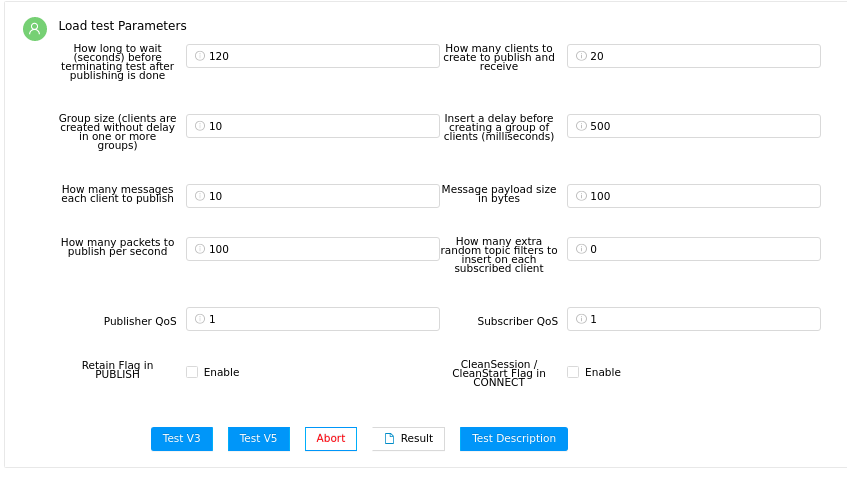
New IoT MQTT Load and Stress Test Tool
23 March 2021
IWL today announced the addition of a load and stress test tool to its IWL MQTT Test Suite (IMTS). The new IMTS Load and Stress Test Tool check the performance of an MQTT broker with very large numbers of simultaneous clients subscribed and a heavy load of messages to process.
MQTT brokers often serve large populations of MQTT clients. While the aggregate amount of data may be small, MQTT brokers may be overwhelmed by the sheer numbers of clients they must serve, particularly if some of those clients are slow, offline, malfunctioning, or not particularly responsive. In addition, clients may be able to maintain an MQTT-over-TCP session, while unable to service MQTT transactions.

With the new MQTT Load and Stress Test Tool, the user creates simultaneous clients consecutively in groups, with or without delays between group creation. The user may specify the sending of messages with different rates, payload sizes, and QoS levels. Additionally, an extra number of random topic filters can be inserted on the target broker to check how topic filtering might affect its performance.
The new MQTT Load and Stress Test Tool reports the load and stress results, providing statistical data on the clients’ receipt of published messages and support of the target number of simultaneous clients created on the target broker.
“Many IoT applications are mission-critical with failures resulting in huge financial losses and/or loss of human life,” explained Karl Auerbach, Chief Technical Officer at IWL. “Evaluating the ability of your broker to withstand a full range of client behavior from the routine to the extreme, at a heavy load is essential to responsible product deployment.”
For a Free Trial of the new IWL MQTT Load and Stress Tool, contact info@iwl.com.
Related Reading:
“The Real Cost of Software Errors” https://ieeexplore.ieee.org/document/4812166
“The Economic Impacts of Inadequate Infrastructure for Software Testing” https://www.nist.gov/system/files/documents/director/planning/report02-3.pdf